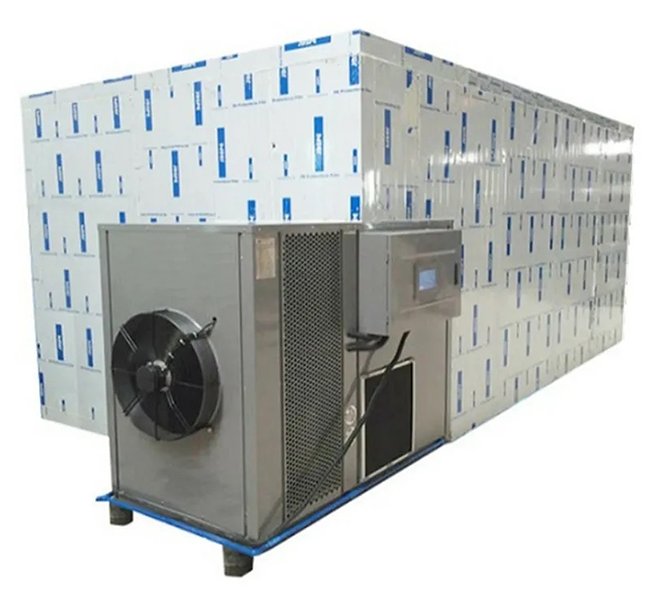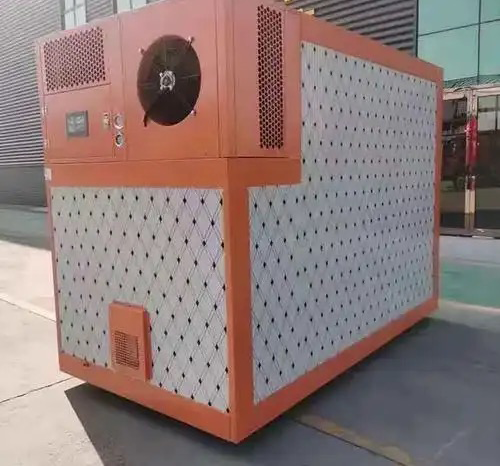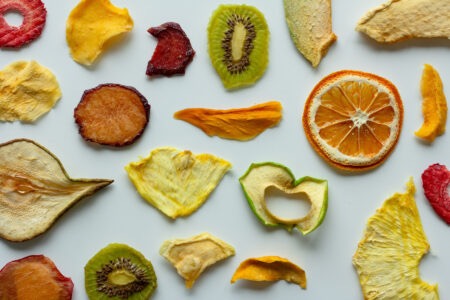
Content Menu
● Understanding Food Drying Technologies
>> Heat Pump Dryers
● Condenser Dryers
● Cost Analysis: Heat Pump vs. Condenser Dryer
>> Initial Investment
>> Operational Costs
● Long-Term Cost Effectiveness
● Environmental Impact
● Quality of Dried Products
>> Nutritional Retention
>> Flavor Preservation
>> Texture Quality
● Versatility in Applications
● Technological Advancements
● Conclusion
● FAQs
>> 1. What is the main difference between a heat pump dryer and a condenser dryer?
>> 2. Are heat pump dryers worth the investment?
>> 3. How much energy do heat pump dryers consume?
>> 4. Can I use a condenser dryer for all types of food?
>> 5. What maintenance do heat pump dryers require?
When it comes to drying food, the choice of dryer technology can significantly impact both efficiency and cost-effectiveness. Two popular options are heat pump dryers and condenser dryers. This article explores the differences between these two technologies, their operational costs, and which one may be more advantageous in the long run for food drying applications.

Understanding Food Drying Technologies
Food drying is a critical process in food preservation, enhancing shelf life, and maintaining nutritional value. The technology used can influence not only the quality of the dried product but also energy consumption and operational costs.
Heat Pump Dryers
Heat pump dryers utilize a refrigeration cycle to remove moisture from food products. They work by evaporating refrigerant at low temperatures, absorbing heat from the environment, and then compressing it to increase its temperature. This hot air is then circulated through the drying chamber, where it absorbs moisture from the food.
Advantages of Heat Pump Dryers:
- Energy Efficiency: Heat pump dryers are known for their energy efficiency. They can operate at lower temperatures, which reduces energy consumption.
- Low Operating Costs: Due to their efficiency, heat pump dryers generally have lower operating costs over time compared to traditional methods.
- Gentle Drying: They provide a gentle drying process that helps retain flavor, color, and nutrients in food products.
- Versatility: Heat pump dryers can be used for a wide range of food items, including fruits, vegetables, meats, and herbs. Their adjustable settings allow for optimal drying conditions tailored to specific products.
Disadvantages of Heat Pump Dryers:
- Higher Initial Cost: The upfront investment for heat pump dryers is typically higher than that of condenser dryers.
- Longer Drying Times: While they are efficient, heat pump dryers may take longer to dry products compared to other methods.
Condenser Dryers
Condenser dryers operate by drawing in humid air from the drying chamber, cooling it down to condense moisture into water, which is then collected. The dry air is reheated and returned to the chamber.
Advantages of Condenser Dryers:
- Lower Initial Investment: Condenser dryers usually have a lower purchase price compared to heat pump dryers.
- Faster Drying Times: They often provide quicker drying times due to higher operating temperatures.
- Simplicity of Use: Many users find condenser dryers easier to operate as they often come with straightforward controls and settings.
Disadvantages of Condenser Dryers:
- Higher Energy Consumption: They tend to consume more energy because they operate at higher temperatures and require more electricity to maintain these conditions.
- Less Efficient: Over time, the operational costs can be higher due to increased energy consumption.

Cost Analysis: Heat Pump vs. Condenser Dryer
To determine which dryer is more cost-effective in the long run, we need to consider both initial investment costs and ongoing operational costs.
Initial Investment
- Heat Pump Dryer: The average cost ranges from $2,000 to $5,000 depending on capacity and features.
- Condenser Dryer: The average cost ranges from $1,000 to $3,000.
Operational Costs
Operational costs include energy consumption and maintenance.
- Heat Pump Dryer:
- Energy consumption is typically around 1 kWh per hour.
- Maintenance costs are relatively low due to fewer moving parts.
- Condenser Dryer:
- Energy consumption can be around 2 kWh per hour.
- Maintenance may be higher due to more mechanical parts involved.
Long-Term Cost Effectiveness
To illustrate long-term cost-effectiveness, let's consider a hypothetical scenario where both types of dryers are used for similar drying tasks over five years:
1. Heat Pump Dryer:
- Initial Cost: $3,000
- Energy Cost (5 years): $1,500 (1 kWh/hour at $0.10/kWh)
- Total Cost: $4,500
2. Condenser Dryer:
- Initial Cost: $1,500
- Energy Cost (5 years): $3,600 (2 kWh/hour at $0.10/kWh)
- Total Cost: $5,100
In this scenario, the heat pump dryer proves to be more cost-effective over five years despite its higher initial investment.
Environmental Impact
Another crucial factor in choosing between heat pump and condenser dryers is their environmental impact. Heat pump dryers are generally more environmentally friendly due to their lower energy consumption and greenhouse gas emissions. In contrast, condenser dryers contribute more significantly to energy use and associated emissions.
Quality of Dried Products
The quality of dried foods is paramount for both consumer satisfaction and marketability.
Nutritional Retention
Heat pump dryers excel in retaining nutrients during the drying process. The lower temperatures used in heat pump technology help preserve vitamins and minerals that are often lost during high-temperature drying methods. This retention is particularly important for health-conscious consumers who seek nutrient-dense foods.
Flavor Preservation
The gentle drying process of heat pump dryers also contributes to better flavor retention. Foods dried using this method tend to have a more intense flavor profile compared to those dried with condenser technology or traditional methods that use high heat.
Texture Quality
The texture of dried foods can significantly impact consumer preferences. Heat pump dryers allow for better control over humidity levels during the drying process, resulting in a consistent texture that is often preferred in high-quality dried products.
Versatility in Applications
Heat pump dryers offer versatility across various food types:
- Fruits: Ideal for preserving sweetness and color without compromising nutritional value.
- Vegetables: Retain crispness while ensuring long shelf life.
- Meats: Effective for jerky production while minimizing bacterial growth through controlled drying conditions.
- Herbs: Maintain aroma and potency due to low-temperature drying capabilities.
This versatility makes heat pump dryers suitable for small-scale artisan producers as well as larger commercial operations looking to diversify their product offerings.
Technological Advancements
The field of food drying technology continues to evolve with advancements aimed at improving efficiency and product quality:
- Smart Technology Integration: Modern heat pump dryers often come equipped with smart technology that allows users to monitor and control drying processes remotely via smartphone apps. This feature enhances convenience and ensures optimal results through real-time adjustments based on environmental conditions.
- Energy Recovery Systems: Some newer models incorporate energy recovery systems that recycle heat within the dryer itself. This innovation further reduces energy consumption while maintaining effective drying performance.
Conclusion
When deciding between a heat pump dryer and a condenser dryer for food drying applications, it's essential to weigh both initial costs and long-term operational expenses. While heat pump dryers may require a higher upfront investment, they offer significant savings in energy costs over time. Additionally, their ability to preserve food quality makes them an excellent choice for businesses focused on maintaining product integrity.
In contrast, condenser dryers may appeal due to their lower initial costs but often lead to higher operational expenses and environmental impact in the long run. Ultimately, businesses should consider their specific needs and usage patterns when making this important decision.

FAQs
1. What is the main difference between a heat pump dryer and a condenser dryer?
The main difference lies in how they remove moisture; heat pump dryers use a refrigeration cycle for efficient moisture removal at lower temperatures while condenser dryers cool humid air to condense moisture into water.
2. Are heat pump dryers worth the investment?
Yes, despite their higher initial cost, heat pump dryers are generally more cost-effective over time due to lower energy consumption and better preservation of food quality.
3. How much energy do heat pump dryers consume?
Heat pump dryers typically consume around 1 kWh per hour during operation.
4. Can I use a condenser dryer for all types of food?
While condenser dryers can be used for various foods, they may not preserve quality as effectively as heat pump dryers due to higher operating temperatures.
5. What maintenance do heat pump dryers require?
Heat pump dryers require minimal maintenance; regular cleaning of filters and occasional checks on refrigerant levels are usually sufficient.












